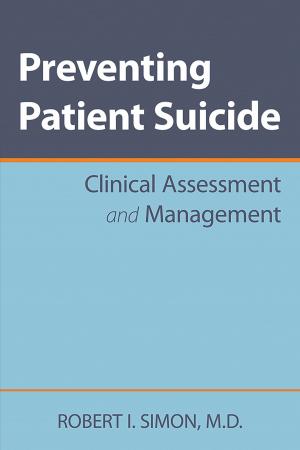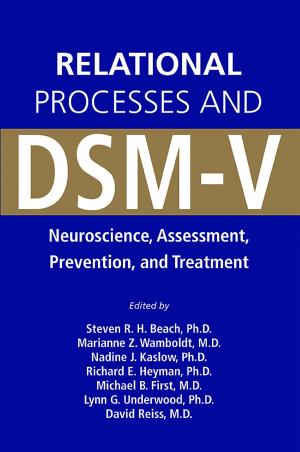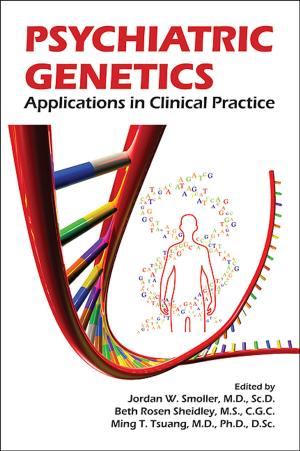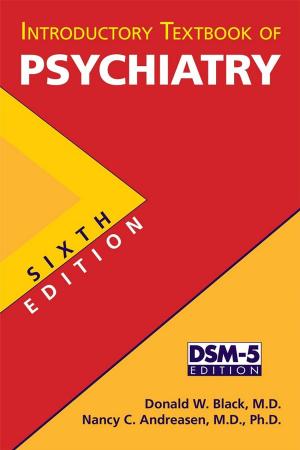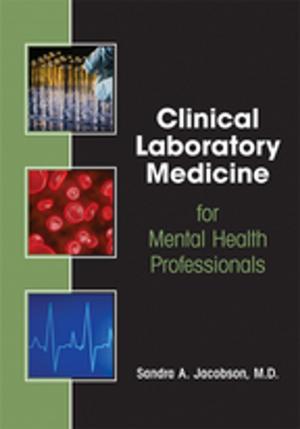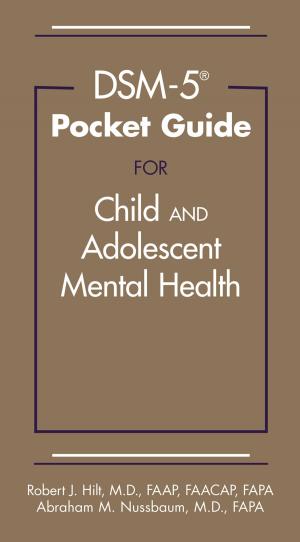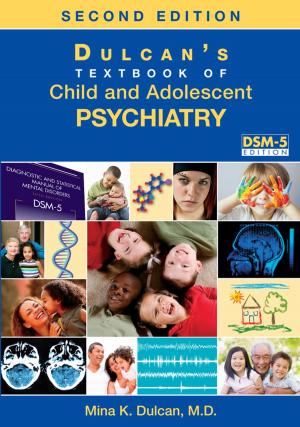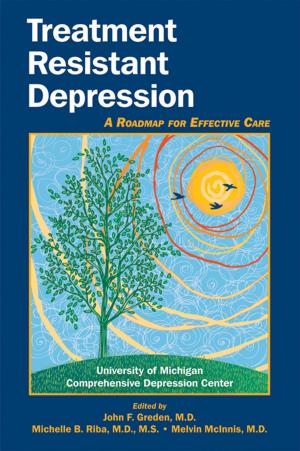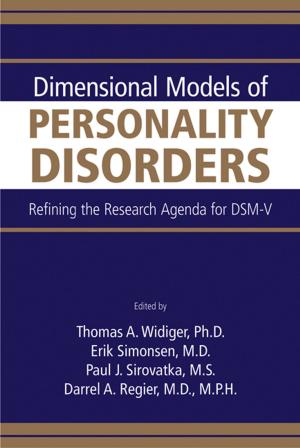The American Psychiatric Association Practice Guidelines for the Psychiatric Evaluation of Adults
Nonfiction, Health & Well Being, Medical, Specialties, Psychiatry| Author: | American Psychiatric Association | ISBN: | 9780890426753 |
| Publisher: | American Psychiatric Publishing | Publication: | July 29, 2015 |
| Imprint: | American Psychiatric Association | Language: | English |
| Author: | American Psychiatric Association |
| ISBN: | 9780890426753 |
| Publisher: | American Psychiatric Publishing |
| Publication: | July 29, 2015 |
| Imprint: | American Psychiatric Association |
| Language: | English |
Since the publication of the Institute of Medicine (IOM) report Clinical Practice Guidelines We Can Trust in 2011, there has been an increasing emphasis on assuring that clinical practice guidelines are trustworthy, developed in a transparent fashion, and based on a systematic review of the available research evidence. To align with the IOM recommendations and to meet the new requirements for inclusion of a guideline in the National Guidelines Clearinghouse of the Agency for Healthcare Research and Quality (AHRQ), American Psychiatric Association (APA) has adopted a new process for practice guideline development. Under this new process APA's practice guidelines also seek to provide better clinical utility and usability. Rather than a broad overview of treatment for a disorder, new practice guidelines focus on a set of discrete clinical questions of relevance to an overarching subject area. A systematic review of evidence is conducted to address these clinical questions and involves a detailed assessment of individual studies. The quality of the overall body of evidence is also rated and is summarized in the practice guideline. With the new process, recommendations are determined by weighing potential benefits and harms of an intervention in a specific clinical context. Clear, concise, and actionable recommendation statements help clinicians to incorporate recommendations into clinical practice, with the goal of improving quality of care. The new practice guideline format is also designed to be more user friendly by dividing information into modules on specific clinical questions. Each module has a consistent organization, which will assist users in finding clinically useful and relevant information quickly and easily.
This new edition of the practice guidelines on psychiatric evaluation for adults is the first set of the APA's guidelines developed under the new guideline development process. These guidelines address the following nine topics, in the context of an initial psychiatric evaluation: review of psychiatric symptoms, trauma history, and treatment history; substance use assessment; assessment of suicide risk; assessment for risk of aggressive behaviors; assessment of cultural factors; assessment of medical health; quantitative assessment; involvement of the patient in treatment decision making; and documentation of the psychiatric evaluation. Each guideline recommends or suggests topics to include during an initial psychiatric evaluation. Findings from an expert opinion survey have also been taken into consideration in making recommendations or suggestions. In addition to reviewing the available evidence on psychiatry evaluation, each guideline also provides guidance to clinicians on implementing these recommendations to enhance patient care.
Since the publication of the Institute of Medicine (IOM) report Clinical Practice Guidelines We Can Trust in 2011, there has been an increasing emphasis on assuring that clinical practice guidelines are trustworthy, developed in a transparent fashion, and based on a systematic review of the available research evidence. To align with the IOM recommendations and to meet the new requirements for inclusion of a guideline in the National Guidelines Clearinghouse of the Agency for Healthcare Research and Quality (AHRQ), American Psychiatric Association (APA) has adopted a new process for practice guideline development. Under this new process APA's practice guidelines also seek to provide better clinical utility and usability. Rather than a broad overview of treatment for a disorder, new practice guidelines focus on a set of discrete clinical questions of relevance to an overarching subject area. A systematic review of evidence is conducted to address these clinical questions and involves a detailed assessment of individual studies. The quality of the overall body of evidence is also rated and is summarized in the practice guideline. With the new process, recommendations are determined by weighing potential benefits and harms of an intervention in a specific clinical context. Clear, concise, and actionable recommendation statements help clinicians to incorporate recommendations into clinical practice, with the goal of improving quality of care. The new practice guideline format is also designed to be more user friendly by dividing information into modules on specific clinical questions. Each module has a consistent organization, which will assist users in finding clinically useful and relevant information quickly and easily.
This new edition of the practice guidelines on psychiatric evaluation for adults is the first set of the APA's guidelines developed under the new guideline development process. These guidelines address the following nine topics, in the context of an initial psychiatric evaluation: review of psychiatric symptoms, trauma history, and treatment history; substance use assessment; assessment of suicide risk; assessment for risk of aggressive behaviors; assessment of cultural factors; assessment of medical health; quantitative assessment; involvement of the patient in treatment decision making; and documentation of the psychiatric evaluation. Each guideline recommends or suggests topics to include during an initial psychiatric evaluation. Findings from an expert opinion survey have also been taken into consideration in making recommendations or suggestions. In addition to reviewing the available evidence on psychiatry evaluation, each guideline also provides guidance to clinicians on implementing these recommendations to enhance patient care.

